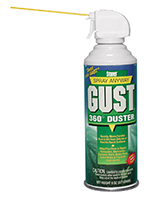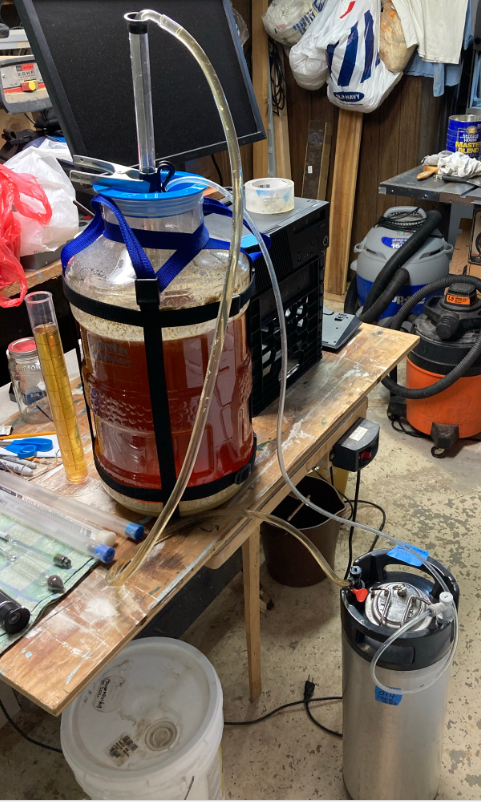Have you ever used a carboy cap before?
Yes. And i am aware how easy they are to pop off. And that in no way changes the validity of what I just posted.

Have you ever used a carboy cap before?
Yeah it does. If you think in anyway that the positive engagement of a carboy cap is similiar to that of a threaded fitting, then you are thinking of this merely from a process standpoint with no respect to reality.Yes. And i am aware how easy they are to pop off. And that in no way changes the validity of what I just posted.
But you are sort of imagining a ideal theoretical yield to your carboy implosion. In reality, I believe that the failure will let air in before the thing shatters to the point of pieces parts flying all over.
I use to shoot TV picture tubes and other things that contained a vacuum with bow and arrow or rifle. It was always a let down. Nothing spectacular ever happened.
Things that had pressure in them conversely were spectacular.
If we are going to be using false equivalencies, I take more risk driving to the store than using a glass carboy. It is a risk I accept, however, and I don't bother telling people not to drive because it is unsafe.To me it's a matter of thinking with an approach to safety rather than the actual risk. Applying pressure to a vessel that very explicitly states not to apply pressure is bad safety practice.
An airlock is a pressure release mechanism. I wouldn't want a clogged airlock or blowoff in a carboy either (and while I phased out glass entirely some time ago, years prior to that glass was only a secondary vessel usually for sours where clogging was not going to be a risk).
The same way that botulism poisoning from non-sterile canned wort is so low risk that there are no reported cases, it is still easily avoided and accordingly not worth the risk, however low that risk may be.
You failed to understand the magnitude of the force being applied to the surface and expressed a complete lack of understanding of the basic pressure equation (Pressure= Force/Area). Pretending to know that you understand physics when you are in the habit of ignoring terms in simple equations, that's reckless.All of my statements are science fact and my numbers are correct. If you want to be cautious that is wise, if not then I wish you luck. But telling new people who don’t understand the physics behind this that it’s perfectly safe is reckless.
If we are going to be using false equivalencies, I take more risk driving to the store than using a glass carboy. It is a risk I accept, however, and I don't bother telling people not to drive because it is unsafe.
[...]there are gory pictures galore from broken carboys, albeit every one I can think of from different causes.

| GUST Spray Anyway 360° Duster "any angle" pressurized cleaner GUST 360° Spray Anyway Duster lets you spray from any angle - even upside down- without frosting. Contains Dustex 11, a 100% ozone safe, non-abrasive, inert, moisture-free, ultra clean gas for precision cleaning, no CFC's, no HCFC's. Suitable for removing dust, lint and particulates from microscopes, cameras, precision parts, electronic equipment and other delicate parts from any angle. Delivers up to 80 psi blasts. 8 oz. (187ml) canister. |
If you'd never had a glass carboy implode, please be aware that they can and do fail. I have, it's no fun and scary as Hell. It wasn't a positive pressure transfer, but rather a negative pressure degassing of a six gallon batch of Chardonnay. As bad a mess as it was, it could have been a whole lot worse. I always thought I was being cautious with carboys. Clearly I neglected to consider some serious safety concerns.You're going to need a spunding valve to relieve pressure in the keg while it's filling, or (less ideally) hold the keg's own PRV open.
I used to do closed transfers with glass carboys. To be honest, it always made me a little nervous, especially if anything clogged the racking cane and required an increase in pressure to dislodge it. It's much safer with a SS conical. And more foolproof from a low oxygen standpoint.

Yes, the force is for the entire area. But you cannot state that a material can "withstand" a certain pressure as a blanket statement. Being able to withstand a certain pressure is entire a topic of not only the material, but it's size and shape as well. You must do an internal force analysis to determine if the material is capible of withstanding that pressure or not.That's what I thought you might be doing. It's pounds divided by square inches. That can be converted to pounds per square ft if you like by multiplying by the value of one, but instead of using 1, you use 144 sq in/1 sq ft as that is also like multiplying by one. You can calculate the total internal surface area and figure out the force, but that force is for the whole area. But in all cases the pressure is 2 pounds per square inch, not 2 pounds by itself.
If you blow 2 psi of air at your skin of your arm, your arm won't break, but your arm hairs might wiggle some. Your skin can withstand about 1000 psi and although glass strength varies that's also the suggested value for regular glass.
There's roughly 2800 square inches of skin on a human. If said human dives down 10 feet, call it just 4 psi, that's 11,200 pounds of force on the skin. In your world, do people get crushed into pancakes in the deep end of the pool by that 5 and 1/2 tons of force?
People are incompressible, air on the other hand is.
Big difference.
P.S. Where is Vale71 when you need him?
If the pressure on the inside of the skin matches that of the outside, there is no force on the skin. If you take a water balloon, fill it with water and no air, and take it to any depth the pressure of the water inside the balloon and the pressure of the water on the outside of the balloon is the same. There is therefore no force on the balloon itself.People have air and other gasses in them. They are very compressible. The liquid and completely solid part of them is not compressible.
Your numbers aren't wrong, but similarly to the case of saying "glass can withstand 1000 psi" there is a lot of nuance there. It's generally not useful to calculate a blanket total force number applied evenly across an area, even if the calculation is entirely accurate.All of my statements are science fact and my numbers are correct. If you want to be cautious that is wise, if not then I wish you luck. But telling new people who don’t understand the physics behind this that it’s perfectly safe is reckless.
Your numbers aren't wrong, but similarly to the case of saying "glass can withstand 1000 psi" there is a lot of nuance there. It's generally not useful to calculate a blanket total force number applied evenly across an area, even if the calculation is entirely accurate.
Caution in the pressurization (or evacuation) of glass containers not designed for such is indeed wise though.
Yes, the force is for the entire area. But you cannot state that a material can "withstand" a certain pressure as a blanket statement. Being able to withstand a certain pressure is entire a topic of not only the material, but it's size and shape as well. You must do an internal force analysis to determine if the material is capible of withstanding that pressure or not.
Glass has a tensile strength of roughly 1000 psi. This absolutely, unequivocally does NOT mean that you can make a container out of glass and put 1000 psi in it! Tensile strength is how much force it takes to pull a material apart. For example, in the case of glass, if you had a glass rod with a diameter of 1.13" (cross-sectional area of 1 in^2), and were able to grip the ends of the rod in such a manner that you could pull the rod apart with a force completely in line with the axis of the rod, without the point you are gripping the rod breaking, then it would take roughly 1000 pounds of force to cause the rod to break. This is because you have reached the tensile strength of the glass, 1000 lbs/1 in^2 = 1000 psi. Make sense?
Okay, now the problem is that in a cylindrical shape, such as a carboy or beer bottle, the force is being applied not in the same way that you would when trying to pull apart a glass rod in the above example. The force of air inside the carboy is pushing outwards, which causes the glass to stretch which causes tensile stresses inside the glass that run more or less tangentially with the surface of the glass. In transition areas this gets a bit more complicated, and there are concentrations of stresses. This can all be calculated, however it's been about ten years since we covered this in one of my mechanical engineering classes, and shapes like carboys that aren't perfect spheres or cylinders get more complicated. The key takeaway though is somewhere in the carboy, a portion will reach that 1000 psi point and fail, which will cause the carboy to shatter as glass does. And this will be a point far, far lower than an internal air pressure of 1000 psi, because the tensile stresses within the glass will be much, much higher than the pressure of the air inside the glass. I'd be shocked if a carboy could hold 50 psi. (and I would be nowhere near such a theoretical carboy!)
...
Can we get back to the realm of the psi actually considered for use?

This is completely unproductive conversation. I'll let what I said stand.There is no false equivalency.
That's an open connection there on the gas post connected to the bucket?Sure: I always have the carboy on a workbench, the keg on the floor, and need just 1-2 psi to get things going then back down to under 1 psi 'til the carboy is empty...
View attachment 742579
Cheers!
Sure: I always have the carboy on a workbench, the keg on the floor, and need just 1-2 psi to get things going then back down to under 1 psi 'til the carboy is empty...
View attachment 742579
Cheers!
Enter your email address to join: